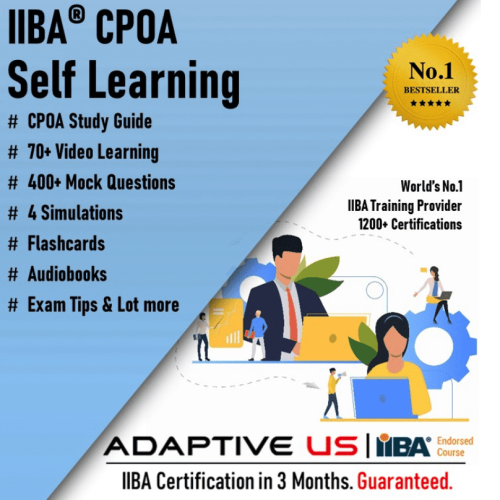Product Owners Using Agile
The product owner role has been embraced by all agile practices and a large number of organisations are adopting agile practices.
There is a need to evolve agile product ownership to assist organisations and teams to deliver products that add value to the customer.
The scrum guide provides provides an industry definition and provides guidance on product owner responsibilities in agile:
provides provides an industry definition and provides guidance on product owner responsibilities in agile:
- Accountable for maximising the value of the product.
- Accountable for effective product backlog management, including:
Developing and explicitly communicating the product goal – the product goal describes a future state of the product which can serve as a target for the scrum team to plan against. The product goal is in the product backlog.
Creating and clearly communicating product backlog items.
Ordering product backlog items; and,
Ensuring that the product backlog is transparent, visible, and understood.
- The product owner may do the above work or may delegate the responsibility to others. Regardless, the product owner remains accountable.
- For product owners to succeed, the entire organisation must respect their decisions. These decisions are visible in the content and ordering of the product backlog, and through the inspectable increment at the sprint review.
- The product owner is one person, not a committee. The product owner may represent the needs of many stakeholders in the product backlog. Those wanting to change the product backlog can do so by trying to convince the product owner.
Agile Product Ownership Context
Ways of working constantly evolve and each organisational context is different – so there is no one size fits all approach. What is important is to understand are the principles of agile and product ownership and to apply these to your organisation context and situation.
and product ownership and to apply these to your organisation context and situation.
The IIBA has recognised the growing need to help the profession and evolve agile product ownership to assist organisations and teams to deliver products that add value to the customer.
has recognised the growing need to help the profession and evolve agile product ownership to assist organisations and teams to deliver products that add value to the customer.
More and more business analyst are now working in an agile context or at least need to understand agile aways of working to start adapting to their projects and or products.
So today’s business analyst may find themselves:
- Supporting product owners.
- Acting as proxy product owners.
- Being asked to take on product ownership responsibilities within agile teams.
Agile Product Ownership Considerations
The IIBA product ownership analysis (POA) provides guidance to help create successful outcomes that deliver value to the customer.
provides guidance to help create successful outcomes that deliver value to the customer.
As an ongoing profession and to accommodate changing ways of working the IIBA has recognised the need to expand understanding of the product owner’s traditional role to encompass tactical and strategic aspects of product development.
Today’s product owner needs to consider and act upon to help avoid facing the risk of developing a product that nobody wants:
- Customer advocate – the product owner should have empathy for the customer and understand the customer’s pain points and opportunities that they seek from the product. The product owner should see the customer in their environment and context to gain insights of the customer and understand key needs, challenges, frustrations to help inform the product direction.
- Team vanguard – the product owner is required to represent the product and be the go to person for the product, helping to represent what the team are building and helping those impacted to understand the product and share feedback to the team so that the product is built to deliver value.
- Design partner – the product owner needs to work with the team understand constraints whilst aiming to steer the product in the right direction to maximise product value.
- Product strategist – the product owner needs to align the product to the customer highest needs and also consider the organisational business objectives to shape a strategic product fit.
- Learning champion – the product owner needs to learn from various sources to shape and develop the product from the customer perspective. Some of the sources for example may be informed from government regulations.
- Value driver – the product owner needs to be customer centric (as this is where value resides) and involve the customer in helping shape the product that the customer will be delighted with.
Product Ownership Analysis Framework
The IIBA product ownership analysis framework has seven domains to provide guidance for a team to maximise the value delivered.
has seven domains to provide guidance for a team to maximise the value delivered.
- Apply foundational concepts – the product owner should help support and assist their organisation and team understanding of supporting product success and helping to deliver products that deliver value.
- Cultivate customer intimacy – the product owner should seek to know the customer and apply customer learnings to steer the products direction.
- Engage the whole team – the product owner should seek to share goals with the team and engage and empower stakeholders of the product.
- Make an impact – the product owner should seek to have the impact of delighting customers and advancing the product strategy in the right direction.
- Deliver often – the product owner should seek to work with the team to plan deliveries and deliver incremental product features that provide value to the customer. The product owner will also need to order the product backlog to enable planned product deliveries.
- Learn fast – the product owner will be required to learn what value can be delivered quickly to help manage the customer’s expectations and to accommodate the frequency of changes to the product to meet customer needs. In today’s economic climate, consumers have choice and may choose to switch to a competitor if their needs are not being met.
- Obsess about value – the product owner should also be considering the value of the product and should have this consideration when weighing up options, ordering the backlog and leveraging the technology that underpins the product.
Agile Product Ownership – Conclusion
The IIBA has provided useful guidance for evolving the understanding of product ownership.
The IIBA Certificate in Product Ownership Analysis (CPOA) certification provides business analyst professionals an opportunity to upgrade themselves and demonstrate knowledge within the product owner analysis framework.
provides business analyst professionals an opportunity to upgrade themselves and demonstrate knowledge within the product owner analysis framework.
You can get IIBA CPOA trained with the Business Analyst Mentor recommended training partner Adaptive US .
.


